Architecture of Totalitarian Control
How Central Banks Rule the World
Most people still don't understand how modern power actually works — or why democratic resistance keeps failing across every Western nation simultaneously. They see the same policies implemented from Canada to Australia, from Sweden to New Zealand, and assume it's coincidence or natural convergence. It's neither.
World War II didn't just end the old order — it installed a new operating system. What they're witnessing is a systematic control architecture that emerged from sophisticated British intellectual networks, got operationalised through American institutions, and now runs global governance through what appears to be moral and scientific authority.
The Scientific Planning Revolution
The blueprint emerged from a sophisticated network of British intellectual elites who had been developing ‘evolutionary’ scientific socialism since the 1880s. The Fabian Society, founded in 1884, advocated gradual transformation toward a scientifically planned society through elite policy-making. Sidney and Beatrice Webb created the London School of Economics1 as their institutional base, while by the 1930s they had established Political and Economic Planning (PEP) as their operational arm for redesigning Britain's social and economic systems.
But the real networking power came through the Cambridge Apostles — the secret philosophical society that included Leonard Woolf, John Maynard Keynes, several future members of the Cambridge Five spy ring, and Victor Rothschild, whose banking family connections provided additional influence channels. Woolf's 1916 Fabian Society publication ‘International Government’2 became the blueprint for the League of Nations, implemented by Alfred Zimmern, who co-founded the Royal Institute of International Affairs (RIIA)3 with Lionel Curtis. Zimmern's 1926 work ‘The Third British Empire’4 advocated transforming the British Empire into Curtis’s commonwealth5 focused on economics and international social justice — an early version of the contemporary ‘moral economy’.
Max Nicholson, who founded PEP in 19316, would later co-found the World Wildlife Fund in 19617, demonstrating direct continuity from technocratic planning networks to contemporary environmental organisations. Meanwhile, J.D. Bernal8 and Joseph Needham9 developed theoretical frameworks for scientific social control that would be implemented through UNESCO, where Needham served as natural sciences director and worked with Soviet scientist Viktor Kovda10 to bring the The International Council of Scientific Unions (ICSU) into UNESCO's sphere almost immediately after UNESCO's founding.
The 1941 'Science and World Order' conference crystallised these various streams into a unified vision: complex human systems could be analysed, modeled, and optimised using scientific methodology, with elite experts managing the process through coordinated international institutions. This vision found crucial development through the Macy Conferences11 (1946-1953), where figures like Norbert Wiener12, John von Neumann13, and Margaret Mead developed cybernetics theory14 — the mathematical foundations for understanding feedback loops and control systems in any domain, from engineering to social organisation. The 1956 Dartmouth Conference15, organised by John McCarthy and Marvin Minsky16, extended this logic into artificial intelligence research, exploring whether machines could simulate and eventually replace human cognitive processes in complex decision-making. Similarly, the Pugwash Conferences17, initiated in 1957 by Bertrand Russell18 (another Cambridge Apostle19), brought together scientists from East and West to discuss global governance through scientific cooperation, ostensibly focused on nuclear disarmament but actually advancing frameworks for international technocratic coordination.
Meanwhile, a string of participants of the 1941 event contributed when the 'Science and Ethics' report was put together the following year, suggesting systematic coordination rather than coincidental convergence. JBS Haldane, Joseph Needham, JD Bernal, and Julian Huxley all contributed to both initiatives, joined in 1942 by Susan Stebbing and Miriam Rothschild. This represented the same network of Marxists, Fabians, and scientific socialists moving from the theoretical framework established in 'Science and World Order' to the methodological implementation outlined in 'Science and Ethics' — transforming their vision of scientific socialism into an operational ethical imperative that could guide human evolution itself only few years before IUCN came to be, ultimately delivering a moral call for planetary stewardship.
The RAND Foundation
These intellectual foundations found their operational expression across the Atlantic: a military think tank called the RAND Corporation, established in 1948 with Ford Foundation funding20. RAND wasn't just another research institute — it was the world's first systematic attempt to operationalise the scientific planning vision that the British Fabian-Marxist network had been developing for decades.
While the British intellectuals had provided the theoretical framework and created the international institutions, RAND developed the mathematical tools and systematic methodologies to make scientific social control actually work21. Created initially to advise the Air Force on nuclear strategy, RAND quickly expanded into something far more ambitious: the development of comprehensive frameworks for managing complex systems of any kind.
The Ford Foundation provided the initial $1 million to make RAND independent in 1948, with Rockefeller funding following throughout the 1950s, and still continuing to this day22. This wasn't coincidental — both foundations recognised that RAND was developing something revolutionary: the operational methodology that could implement the scientific socialism that figures like Bernal, Huxley, and the Fabians had envisioned, but now applied through American institutional power and resources.
RAND's breakthrough built on wartime operations research23 — the mathematical optimisation techniques developed during World War II for military logistics and resource allocation. But where operations research focused on specific tactical problems, RAND developed something far more ambitious: an evolved version of Leontief’s input-output analysis that could be applied to every domain of human organisation. Instead of relying on traditional political judgment or institutional wisdom, RAND developed methods to quantify inputs, model relationships, and optimise outputs across entire systems. Whether analysing nuclear strategy, urban planning, or social behavior, everything could be reduced to mathematical relationships and algorithmic solutions24.
Edwin Paxson's 1950 ‘Strategic Bombing Systems Analysis’ became the template25. Albert Wohlstetter's base selection studies26 showed how to integrate multiple variables — geography, logistics, intelligence, communications — into unified strategic frameworks. Charles Hitch's27 economics division developed cost-benefit methodologies that could be applied to any institutional decision-making process.
But RAND's most significant innovation was recognising that the same analytical framework could be applied across domains. Military strategy, economic policy, social planning, and behavioral modification all followed similar systematic principles. What RAND discovered — and what underlies all modern governance — is what could be considered a ‘KIEL’ structure: a universal control stack operating through four fundamental domains:
Knowledge (who defines problems and solutions)
Information (how coordination happens)
Energy (resource allocation and enforcement)
Land (territorial implementation).
Control these four domains systematically, and you could control any complex system, whether a military operation, a national economy — or even global governance itself.
The Systematic Transition
When Robert McNamara brought RAND's Planning-Programming-Budgeting System to the Pentagon in 1961, he was implementing this systems approach requiring input-output analysis to governance (Planning requires knowledge, programming requires information, and budgeting requires resources and energy). After Kennedy's assassination in 1963, Johnson expanded PPBS government-wide in 1965 while Kogysin simultaneously implemented much the same behind the iron curtain. McNamara then exported it globally through the World Bank starting in 1968 (Country Program Papers)28 before the two superpowers were fused on May the 23rd, 1972.
Within a decade, every major international institution operated using RAND-derived methodologies. Democratic deliberation got replaced by technocratic optimisation, but it happened so gradually that most people never noticed the transition.
Eventually, this developed to become Result-Based Management (RBM)29, using Key Performance Indicators (KPI)30. These days, those are particularly emphasises in context of development finance relating to the Sustainable Development Goals31.
The Four-Domain Control System in Practice
The genius of this system lies in its simplicity. Every major policy area — immigration, climate, health, finance, education — gets processed through the same four-domain framework:
Knowledge/Strategy Domain: Academic institutions and think tanks reframe issues using predetermined analytical frameworks. Immigration becomes ‘demographic transition’ and ‘labor market optimisation’. Climate becomes ‘planetary boundaries’ and ‘sustainable development’. Opposition gets labeled as ‘misinformation’ or ‘extremism’.
Information/Administration Domain: International organisations coordinate policy implementation across nations. The UN, EU, WHO, and countless ‘Third System’ or ‘Third Way’ NGOs engaging in Trisectoral Networks create binding obligations and regulatory frameworks that bypass democratic oversight. National governments find themselves implementing policies they never officially adopted.
Energy/Resource/Operational Domain: Financial markets and corporate systems enforce compliance through ESG scores, credit ratings, and investment flows. Countries or institutions that resist face automatic punishment through ‘market mechanisms’ that are anything but free.
Territory Domain: Local implementation happens through local authorities, courts, and enforcement mechanisms that operate independently of democratic input. By the time citizens notice policy changes, the new reality is already institutionalised.
This is how every major Western policy gets coordinated across supposedly independent nations, often against the expressed will of their populations.
And the Strategy-Administration-Operation model is further explicitly what Arthur Schlesinger, Jr attempted to fuse into the CIA reorganisation in 1961, based on the RIIA-Fabian Society-UK Government model, favoured by Zimmern.
The Digital Control Revolution
But the system has evolved far beyond McNamara's original vision. Modern control operates through digital platforms that would have seemed like science fiction in 1961. Social media platforms now function as intellectual discourse clearinghouses32, using algorithmic curation33 to ensure that approved narratives dominate public conversation while dissenting voices get systematically marginalised — all while using dissenting voices to train next generation AI constraints.
AI Ethics34 has emerged as the knowledge production center for this digital control system. Under the banner of ‘safety’, preventing ‘bias’ and ‘misinformation’, AI systems get programmed to promote specific worldviews35 — while suppressing alternatives. The same systematic methodology that PPBS brought to government budgeting now gets applied to human thought itself.
Search results, social media feeds, and news recommendations all get optimised according to predetermined policy objectives36. Citizens think they're accessing neutral information, but they're actually receiving systematically curated content designed to shape their opinions in predictable directions. The behavioral research conducted in the 1950s and 1960s finally found its perfect implementation mechanism.
But algorithmic control wasn't enough. To make the architecture truly resilient, it needed legitimacy that went beyond mere efficiency or convenience. The system required a ‘global ethic’ — a moral authority that would make resistance not just difficult, but socially and spiritually unacceptable. Enter the ‘moral economy’ — the Marxist revisionist Eduard Bernstein’s revolutionary framework from 189937 which ultimately enforced ‘common good’ compliance through ethical imperatives that transform systematic control into moral duty.
The ‘Moral Economy’ Revolution
This system has evolved beyond crude financial manipulation into something far more sophisticated. By framing monetary policy around Zimmern’s social justice, IUCN’s environmental protection, the Earth Charter’s ‘planetary ethics’38, and alleged intergenerational equity, central banks have discovered they can control entire civilisations without anyone recognising it as control. When the Bank of England implements ‘diversity requirements’ for lending39 or the Federal Reserve talks about ‘climate risk’40 through ‘green bonds’41, they're not expanding their mandate — they're revealing what their mandate always was.
Central42 Bank43 Digital44 Currencies45 represent the completion of this evolution. Money that can be programmed to only work for approved purchases, with approved vendors, in approved locations, for approved people — or if the money is claimed to be ‘non-programmable’, then this function can always be inserted into the mBridge46 digital wallet technology instead. This leads to a world where social credit scores become automatic through algorithmic enforcement, gradually phased in through micro-incentives for ‘good’ ie ‘ethical’ behaviour, with ‘good governance’ standards imposed on elected officials, corporate enterprise, and civil society organisations. Dissent becomes ultimately literally impossible when the system can simply turn off your ability to engage in economic activity for refusing to engage in ‘ethical leadership’47, ultimately based on ‘ethical imperatives’ imposed entirely outside of democratic capacity.
The beauty of the moral framing is that resistance appears immoral. Who could oppose ‘sustainable development’ or ‘inclusive finance’? Critics get painted as defending pollution, inequality, or discrimination. The control mechanisms hide behind the very values most people obliviously support.
However, this is all based upon inversion. ‘Truth’, per Paul Carus, should be viewed in ‘the aspect of the eternal’ thus transferring power to those who claim they can predict the future, while Hermann Cohen’s inversion suggests ethics should be dictated by law — as opposed to ethics keeping law in check.
‘Inclusive Capitalism’: The Ultimate Brand
What we're witnessing isn't capitalism or centrist socialism — it's something entirely different masquerading as progressive reform: scientific socialism48. ‘Inclusive capitalism’ hypothetically means everyone gets included in the control system, but who selects those excluded? ‘Stakeholder governance’ means shareholders and voters lose power to unelected UN General Consultative Status NGOs or activist front CSO administrators. ‘Sustainable development’ means managed scarcity for the masses while elites coordinate resource allocation through their own networks.
The corporations become enforcement agents rather than independent actors. They implement ESG requirements, diversity mandates, and carbon restrictions not because markets demand it, but because the financial system they depend on gradually turns compliance mandatory, pretending to be voluntary in much the same way which led to healthcare staff being fired for refusing the ‘vaccine’ during Covid — object, and you’re penalised for breaking the ‘ethics code’. Corporate executives become middle managers in a global administrative hierarchy, just like politicians.
This explains why every major corporation — regardless of customer base or business model — ends up promoting identical social and environmental messaging. It's not spontaneous convergence — it's systematic coordination through financial control mechanisms. Refuse, and raising money on the bond markets suddenly becomes a whole lot more expensive.
Why Democratic Resistance Keeps Failing
Now you should understand why voting harder doesn't work. Politicians operate within the operational layer — they can win elections but cannot change the underlying coordination mechanisms that control strategic planning, long ago outsourced to the RIIA and CFR, with the Trilateral Commission established to coordinate undemocratic trisectoral governance, allegedly steered by ‘common good’ NGOs presenting modelled unpredictability as gospel truth.
When leaders try to resist, they face coordinated pressure across all domains:
Academic institutions question their legitimacy
International organisations create ‘voluntary’ ‘soft law’ obligations
Financial markets punish non-compliance
Administrative agencies resist implementation
Brexit took years to implement despite a clear democratic mandate. Trump's border policies faced constant legal challenges from NGO networks funded by foundations. Populist governments across Europe find themselves constrained by EU regulations, court decisions, and market pressures they cannot control.
The system processes democratic inputs like a computer processes data — it takes in surveillance ‘indicator’ data but produces outputs determined by Digital Twin prediction, steered by ‘expert’ panels.
The Network That Rules
At the center of this architecture sit the institutions most people have never heard of: the Council on Foreign Relations49 and the Royal Institute of International Affairs50. These aren't mere think tanks — they're the knowledge production centers that train the administrative class and coordinate policy across Western institutions.
For over a century, they've developed the analytical frameworks that get implemented as ‘international best practices’. From the League of Nations to the United Nations, engineering the conditions leading to Keynes’s General Theory being workable, to creating financial instruments to ‘combat global warming’ and implement the sustainable development goals, from NATO expansion to global health governance51 — the policy concepts originate in these networked institutions and flow out through the administrative layer.
The Rockefeller and Ford Foundations commonly provide the funding infrastructure, creating a systematic coordination mechanism that operates across borders, political parties, and supposed ideological differences. When you see the same policies being implemented simultaneously across supposedly independent nations, you're seeing this network in action.
The Intelligence Connection
The same networks that developed modern governance systems were intimately connected to behavioral control research programs, including MKUltra52 and the Human Ecology Fund53. The Rockefeller Foundation directly funded social science research54 into human behavior modification55, psychological manipulation, and systematic social control56.
This wasn't peripheral to their mission — it was central to it. They needed to understand how to make populations accept policies that worked against their interests. The research conducted in the 1950s and 1960s provided the psychological foundation for the contemporary control systems.
When you see entire populations accepting policies that obviously harm them — open borders, energy restrictions, economic lockdowns, financial policies that transfer wealth upward — you're seeing the successful application of systematic behavioral modification techniques developed decades ago.
What Comes Next?
This system has one critical vulnerability: most people don't understand how it works. They keep trying to solve problems through institutions that were designed to prevent solutions. They vote for politicians who can't change the underlying system. They protest policies that are determined by administrative processes beyond democratic reach.
But once you see the architecture, you can't unsee it. Every major policy development becomes predictable. Every ‘crisis’ that generates identical responses across nations reveals the same coordination mechanisms, leading to a scripted ‘solution’. Every moral panic ‘justifies’ expanded technocratic powers.
The question isn't whether this system exists — the evidence is overwhelming. The question is what happens when enough people understand how it actually works.
Understanding this doesn't make you a conspiracy theorist. It makes you someone who finally comprehends how power actually operates in the modern world. The politicians you vote for are middle management. The policies they implement are predetermined by institutions you've never heard of, funded by ‘philanthropic’ foundations that claim to serve the ‘common good’57, and enforced through financial mechanisms designed to make resistance economic suicide.
The control architecture is complete and operational.
The moral framework makes resistance appear immoral.
The digital systems make coordination automatic.
The financial mechanisms make compliance mandatory.
Yet here lies the ultimate paradox: a system designed to prevent resistance by making it unthinkable may have made itself vulnerable to the one thing it cannot program — the moment when enough people simultaneously see through the moral facade and recognise the ‘cosmopolitan’ control structure for what it is.
The question is no longer ‘Who is in charge?’ but ‘Can a system designed to prevent resistance ever be peacefully reprogrammed?’
Time is running out to discover the answer.
Appendix A: The Complete Control Architecture
Central Banks (Ultimate Control Layer)
Control money creation and credit allocation globally
Use monetary policy to enforce compliance across all institutions
Moving toward programmable digital currencies that can be restricted for specific uses
Frame economic control through moral imperatives (climate, equity, sustainability)
Coordinate policy across supposedly independent national central banks
Foundations (Funding Coordination Layer)
Rockefeller and Ford Foundations serve as primary coordination nodes
Fund knowledge production and administrative infrastructure globally
Provide philanthropic cover for systematic control initiatives
Create tax-exempt mechanisms for wealth preservation and policy influence
Coordinate funding across academic, media, and civil society networks
CFR/RIIA (Strategic Knowledge Production Layer)
Generate analytical frameworks and policy concepts that become ‘international best practices’
Train administrative class in systematic methodology across Western institutions
Coordinate narratives and policy frameworks across national boundaries
Provide revolving door between academic, government, and corporate positions
Maintain institutional memory and long-term strategic planning capabilities
Administrative Implementation Layer
UN system creates binding international obligations that override national sovereignty
NGO networks implement policies through civil society pressure and legal challenges
Regulatory agencies process policy through administrative rather than democratic mechanisms
International courts provide enforcement mechanisms beyond national democratic control
Fabian Society's gradual transformation methodology enables systematic institutional capture without democratic awareness
Create permanent bureaucratic infrastructure that survives changes in elected leadership
Digital Control Layer
Social media platforms curate information and shape public discourse algorithmically
AI Ethics frameworks ensure systematic content control while appearing neutral
Search engines and recommendation systems direct attention according to predetermined objectives
Digital payment systems create infrastructure for programmable money and social credit
Surveillance systems provide real-time monitoring and behavioral modification capabilities
Corporate Enforcement Layer
ESG scores create automatic compliance mechanisms across all major corporations
Stakeholder capitalism eliminates shareholder and democratic accountability
Supply chain integration makes resistance economically impossible for most businesses
Corporate media coordinates messaging across supposedly independent outlets
Financial services enforce compliance through credit, investment, and payment access
Government Operations Layer (Lowest Level)
Elected officials implement predetermined policies with limited autonomy
Democratic processes provide legitimacy theater while real decisions happen above
National governments compete to demonstrate compliance with international frameworks
Political parties offer different flavors of the same systematic approach
Local implementation agencies operate according to administrative rather than democratic directives
This hierarchical structure ensures that resistance at any single level gets neutralised by coordination across all other levels. The system processes democratic input but produces outputs determined by systematic programming rather than popular will. Understanding this architecture explains why identical policies get implemented across supposedly independent nations regardless of local political preferences or democratic mandates.
Appendix A: Responses to Anticipated Rebuttals
‘This is just conspiracy theory - you're seeing patterns where none exist’
The documentation shows specific individuals moving between specific institutions implementing specific methodologies. Leonard Woolf writing the League blueprint, Needham directing UNESCO science programs, McNamara exporting PPBS through the World Bank — these aren't patterns imposed on random data, they're institutional relationships with documented outcomes. When the same analytical frameworks appear across supposedly independent organisations, implemented by people who trained in the same networks, that's evidence of coordination, not coincidence.
‘These are natural convergences - similar institutions develop similar approaches to similar problems’
‘Natural convergence’ cannot explain why identical policy language appears simultaneously across nations with different political systems, economic conditions, and cultural contexts. The EU's ‘Green Deal’58, Biden's ‘Build Back Better’59, Canada's ‘Net Zero’60, and Australia's ‘Powering the Future’61 weren't developed independently — they emerged from the same policy networks using identical frameworks. Natural convergence would produce varied approaches reflecting local conditions, not synchronised implementation of predetermined templates.
‘You're confusing correlation with causation - these connections don't prove deliberate coordination’
When Person A develops Framework X at Institution B, then moves to Institution C where Framework X gets implemented, then Institution D adopts Framework X after consulting with Institution C, that's not correlation — that's traceable causation. The PPBS methodology didn't spontaneously appear in multiple organisations; it was deliberately exported by RAND-trained personnel through documented channels. The paper trail exists.
‘There are too many competing interests and incompetent actors for this level of coordination’
The system doesn't require perfect coordination or universal competence — it requires control of the analytical frameworks that define problems and solutions. Individual actors can compete within predetermined parameters while the fundamental structure remains unchanged. Corporate executives compete for market share while implementing identical ESG frameworks. Politicians compete for votes while operating within identical fiscal and regulatory constraints. Competition within the system reinforces the system.
‘Democratic institutions still have real power - look at Brexit, Trump, populist movements’
Brexit took nearly five years to implement62 despite a clear mandate, and the UK still operates within the same international frameworks on climate, finance, and trade. Trump's policies faced systematic resistance from administrative agencies, courts, and international agreements that remained intact throughout his presidency63. Populist movements win elections but find themselves constrained by the same institutional mechanisms that limited their predecessors. The system processes democratic inputs but maintains predetermined outputs.
‘You're attributing superhuman competence to these networks - real institutions are messier and less coordinated’
The system's power lies in its simplicity, not complexity. It doesn't require perfect execution, just control of the four key domains (Knowledge, Information, Energy, Land). Academic institutions don't need to coordinate daily operations — they just need to use the same analytical frameworks. International organisations don't need seamless cooperation — they just need binding agreements that constrain national policy. The messiness is a feature, not a bug, because it obscures the underlying coordination.
‘Professional networks and shared training explain these similarities better than deliberate control’
Shared training is the mechanism, not an alternative explanation. When the same institutions train the administrative class across Western nations using the same methodologies, that creates systematic coordination regardless of conscious intent. The CFR and RIIA are as much networking clubs as training centers that produce standardised approaches to governance. Graduates implement similar policies because they learned similar frameworks, which is exactly how systematic control operates.
‘Modern societies are too complex for this kind of deliberate management’
Complex systems are easier to control than simple ones, not harder, because complexity obscures control mechanisms. The more variables in a system, the more essential systematic frameworks become for managing decision-making. RAND's breakthrough was recognising that complexity requires systematic methodology, not abandoning it. Modern digital systems can process complexity that would have been impossible in earlier eras, making systematic control more feasible, not less.
‘These policies often fail or get reversed - if there was real control, implementation would be more effective’
Policy ‘failures’ often achieve their intended systematic effects even when they fail in their stated objectives. COVID lockdowns that damaged economies while expanding administrative power served the system's interests regardless of their public health outcomes. Climate policies that increase energy costs while enriching corporate stakeholders work exactly as designed. The system optimises for coordination and control, not policy effectiveness as publicly measured.
‘You haven't proven conscious conspiracy - maybe this just reflects the logic of modern institutions’
The distinction between conscious conspiracy and institutional logic is irrelevant to outcomes. Whether coordination happens through explicit planning or systematic methodology, the result is identical: synchronised policy implementation across supposedly independent institutions. The system works the same way regardless of participants' subjective awareness of their role in it. Understanding the mechanism matters more than determining intent.
The evidence documents institutional relationships, methodological transmission, and systematic coordination across decades. These aren't theoretical possibilities but documented historical processes with observable contemporary outcomes. The question isn't whether this system exists, but whether democratic populations will recognise how it operates before it becomes completely irreversible.




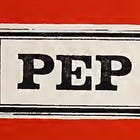
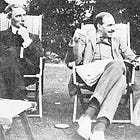









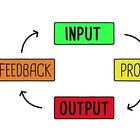
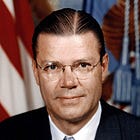











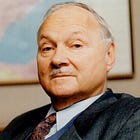







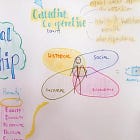





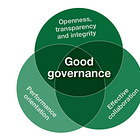
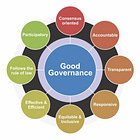






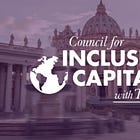









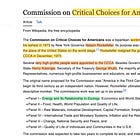







This is absolutely stellar. I can't believe you put this altogether. Well done.
Amazing content. It's a massive amount to read from a screen - in book form it would be fantastic.
Just a thought. Thank you for your impressive effort in compiling this info. Much appreciated. However, I'll have to read it again to take it all in!